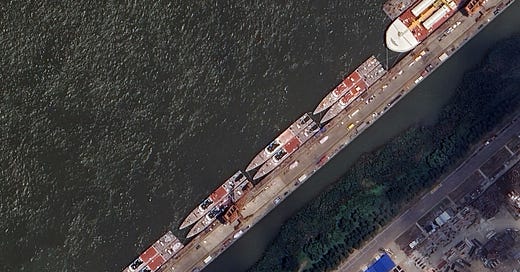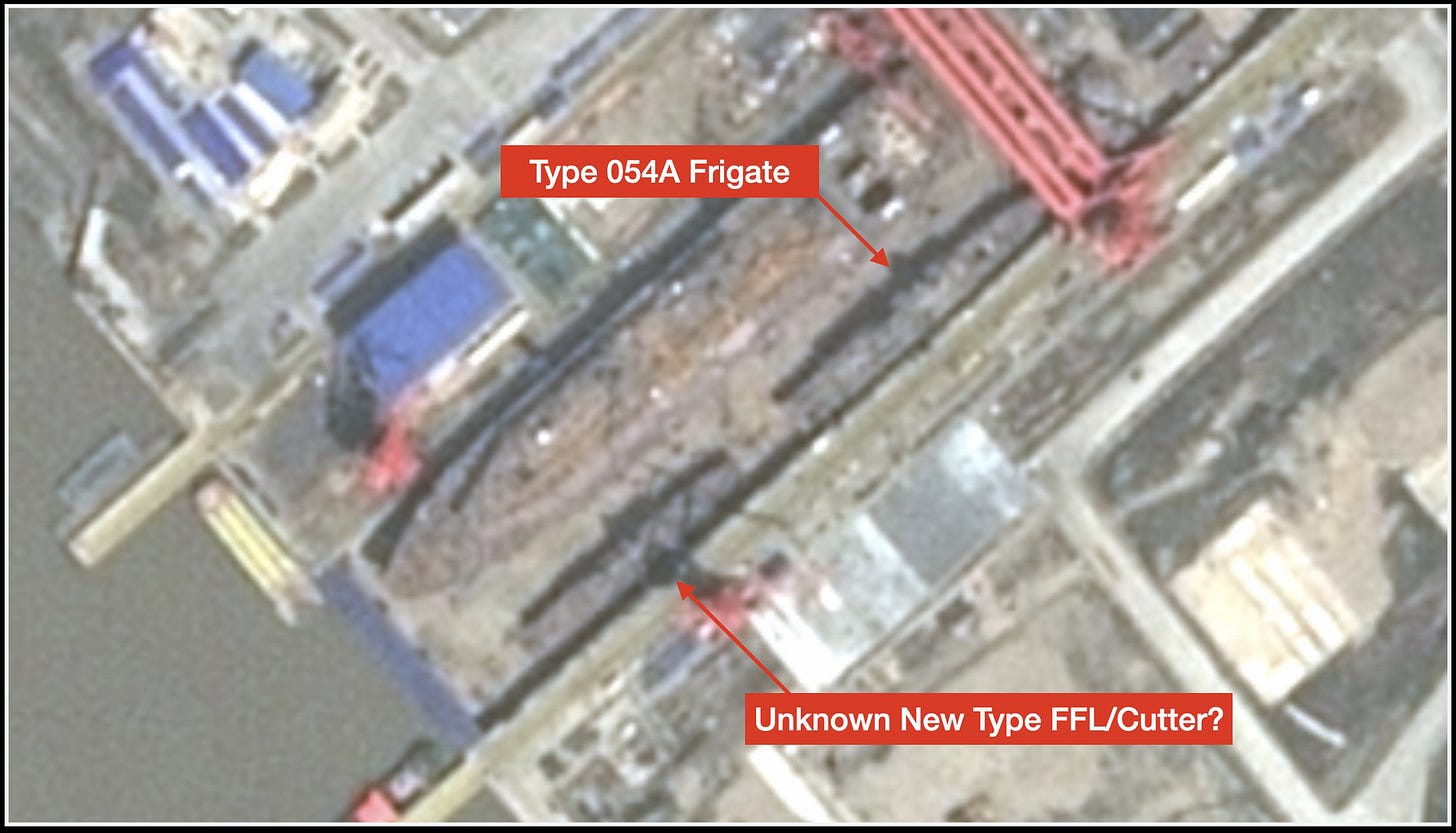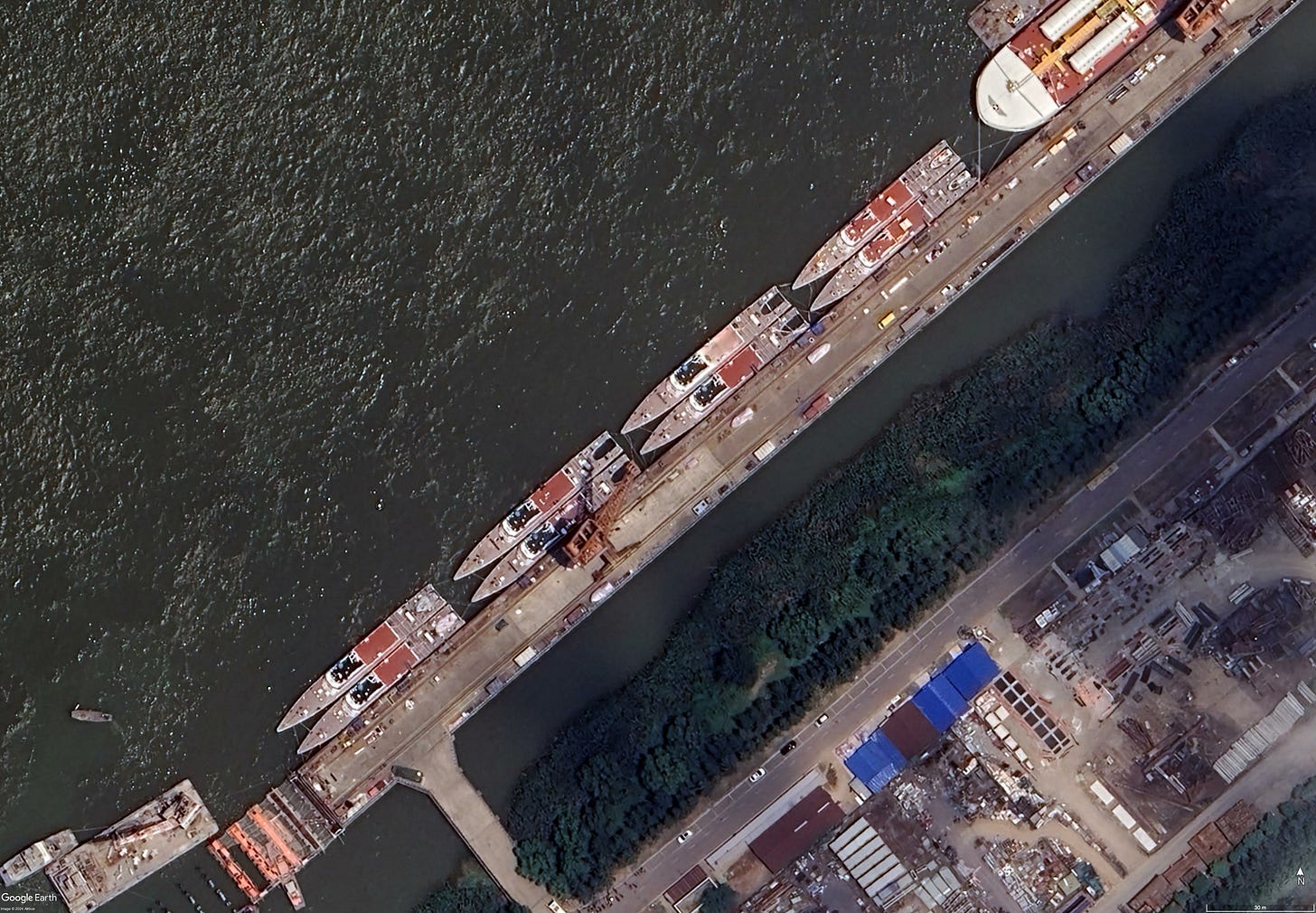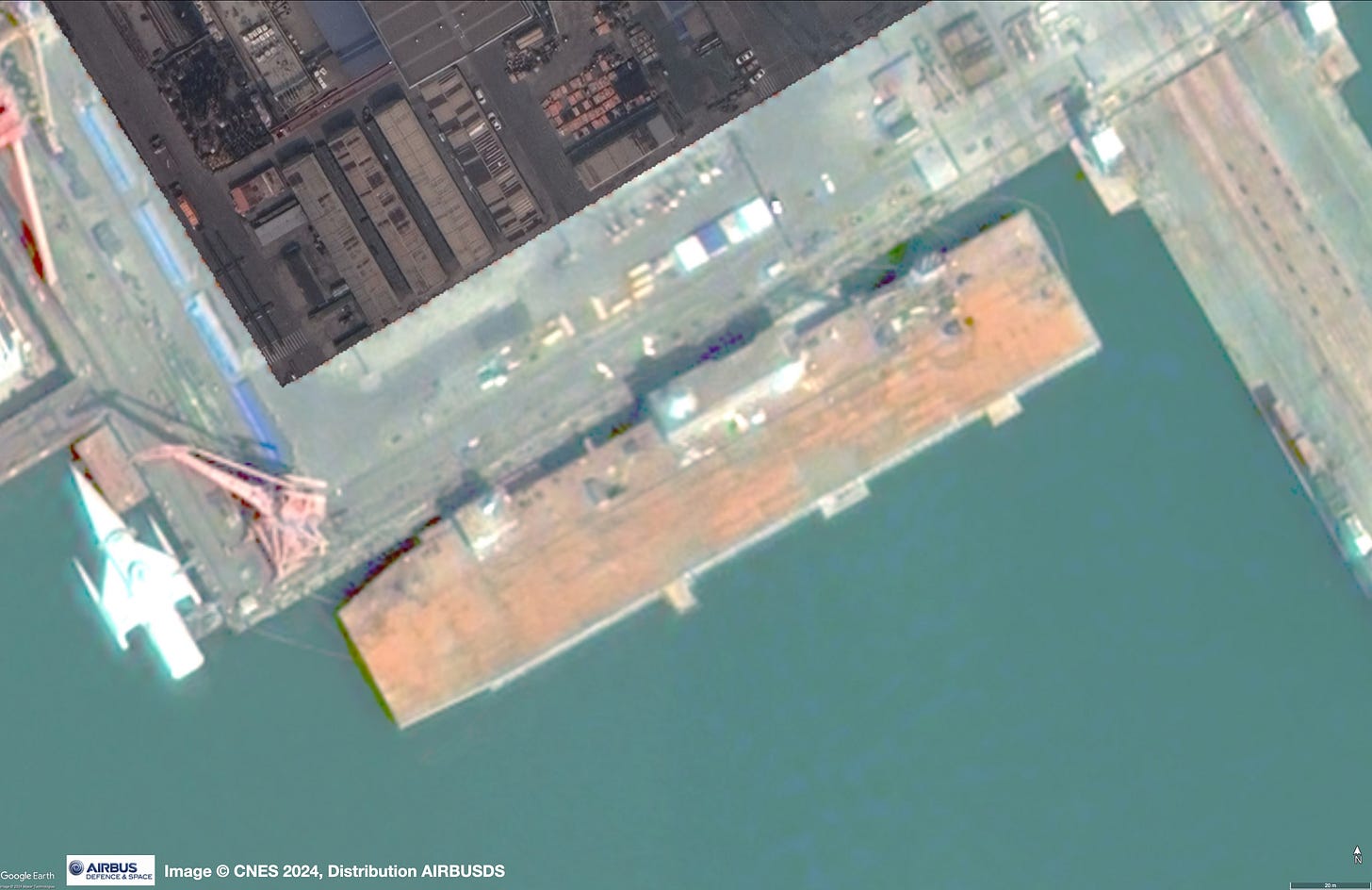The Great White Wall
China’s Coast Guard Expansion and What It Could Mean for the Future of Taiwan
China is rapidly scaling up its Coast Guard fleet in ways that should make us think hard about its potential future plans for Taiwan. While the People’s Liberation Army Navy (PLAN) has long been the symbol of China’s maritime ambitions, recent developments suggest a potentially-significant shift: naval production capacity is now being diverted toward constructing large China Coast Guard (CCG) vessels. This trend carries important implications for Taiwan, which could find itself at the center of a much more aggressive and organized maritime pressure campaign. It also may indicate greater confidence that China can deter a U.S. military intervention in a Taiwan conflict.
Of note, this expansion is not just about numbers—it is about capability. China is producing newer, larger platforms, many based on hull designs originally developed for PLAN surface combatants. These ships, while not heavily armed in the naval sense, are large, robust, and likely capable of staying on station for long periods. The shift suggests that Chinese leaders increasingly view the CCG not just as a law enforcement tool, but as a flexible force for advancing national interests—perhaps particularly in relation to Taiwan.
A Shift in Priorities
There is mounting evidence that China is devoting major resources to this buildup:
Multiple frigate-sized patrol ships based on the PLAN’s Type 054 hull are now in service, with more under construction.\
A class of destroyer-sized patrol ships based on the Type 052 design has been launched.
A completely new corvette-sized CCG vessel is being built at multiple shipyards simultaneously.
A white-hull aircraft carrier—apparently not operated by the PLAN—has appeared, though its final role remains unknown.
Imagery in 2024 showed twenty-four smaller patrol vessels under simultaneous construction at a single Chinese shipyard.
China Coast Guard ships are now routinely participating in exercises around Taiwan, including recent war games featuring some of the largest cutters in the fleet.
This does not appear to be coincidental, and may reflect a strategy to field a white-hull fleet with the size, endurance, and seakeeping of naval vessels, but under the more politically palatable label of “coast guard.”
Beijing’s decision to prioritize the Coast Guard over additional PLAN hulls may also reflect growing confidence in its precision strike capabilities. If Chinese planners believe they can deter a U.S. response in a Taiwan contingency, a robust Coast Guard may be a lower-risk option for achieving their objectives—and gray-hull PLA Navy ships may be needed in smaller numbers if the U.S. military doesn’t need to be fought directly.
Taiwan: The Likely Focal Point
The implications for Taiwan are difficult to ignore. A significantly modernized and expanded China Coast Guard (CCG) is becoming well-positioned to spearhead the early phases of a maritime quarantine or blockade. As highlighted by the CSIS ChinaPower project, such a campaign could begin in ways that fall below the threshold of open conflict—relying on white-hull ships to intercept, board, or redirect commercial traffic under the pretense of customs enforcement or maritime safety protocols.
With a fleet capable of maintaining persistent, large-scale patrol operations, the CCG could encircle Taiwan and gradually sever its maritime links to the outside world without initiating overt hostilities. The ambiguity inherent in such actions would allow Beijing to apply coercive pressure while probing the responses of Taipei, Washington, and others. In essence, China could attempt to shift the status quo without immediately crossing the red lines that might trigger a U.S. intervention.
The scale of the force underscores this shift. The Chinese Coast Guard’s total displacement now surpasses that of all NATO European, and most Pacific navies, making it the largest maritime law enforcement fleet in the world by a considerable margin. This is not simply a peacetime presence. It is an instrument of national power, fielded at scale, and likely built to play a leading role in any future Taiwan crisis.
Confidence and Signaling
If the CCG is already more than capable of handling maritime disputes with the Philippines and Japan, why keep expanding it? The answer may lie in timing—and over Taiwan. U.S. defense officials have noted that Xi Jinping has directed the PLA to be ready for a Taiwan conflict by 2027. A larger and more modern CCG would give Beijing options. It can exert pressure in multiple places at once, free up PLAN resources, and show strength without triggering the kind of reaction that gray hulls might.
In the "Concrete Sky" report I co-authored, we argued that U.S. bases in the Western Pacific remain dangerously soft. What is more concerning now is the possibility that Beijing is not just betting on delaying a U.S. response—but on deterring it altogether. The scale and intensity of the Coast Guard buildup suggest a growing confidence that China could take early, aggressive action around Taiwan while keeping U.S. forces sidelined by the credible threat of precision strikes and disruption. If Chinese strategists think they can prevent U.S. entry into the fight altogether, a force like the CCG becomes all the more valuable in setting the terms of the conflict.
Why This Isn’t Just Business as Usual
Some might argue that China’s Coast Guard expansion is just about replacing aging ships or improving maritime law enforcement. But that does not square with what we are seeing. This is a fleet expansion involving entirely new classes of large vessels: Type 054 frigate-based hulls, a destroyer-sized Type 052-based platform, a new corvette-sized class under construction at multiple yards, and even a white-hull carrier. These are strategic choices—not routine upgrades—backed by a clear reallocation of naval industrial capacity.
Others may claim the CCG wouldn’t play the central role in a Taiwan scenario—that such operations would fall mostly to the PLA Navy. But that view overlooks the recent reality: Coast Guard ships are already participating in joint exercises around Taiwan, including scenarios that look strikingly similar to a quarantine or encirclement operation. These are not theoretical deployments—they are rehearsals. As U.S. Navy Admiral Samuel Paparo noted earlier this year, these operations are "not exercises; they are rehearsals" for a forced reunification with Taiwan (USNI News, Feb 2025). The drills increasingly resemble preparations for a blockade or encirclement campaign—one that could begin with Coast Guard units establishing control while the PLA holds conventional forces in reserve.
Conclusion: A Force to Watch
This isn’t just peacetime modernization. China’s Coast Guard is being positioned as a central tool of its strategy toward Taiwan. With every new ship launched, Beijing gains increasing options to isolate Taiwan, complicate outside intervention, and erode the cross-strait status quo.
Note: this piece was written with the assistance of artificial intelligence






